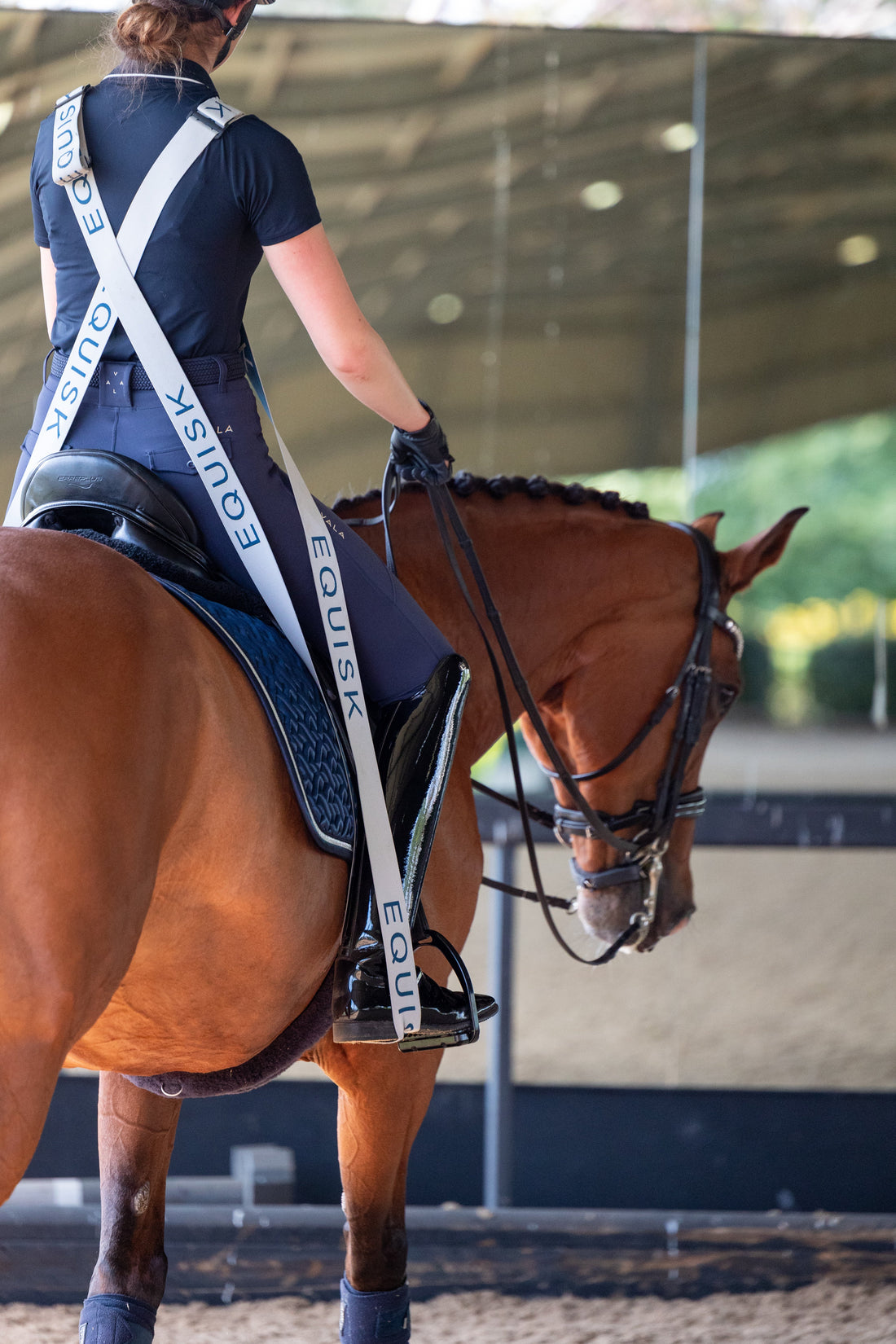
The Art of Warming Up: Preparing Your Horse for Dressage Work
Aktie
A good warm-up is the foundation of any successful dressage session. It sets the tone for the ride, allowing the horse to loosen up physically and mentally while the rider establishes control over their position, balance, and communication. A well-structured warm-up is not just about getting the horse moving—it’s about preparing both horse and rider to work in harmony. Here’s how to make the most of this crucial phase.
Start with Rising Trot to Loosen Up
The initial warm-up should focus on allowing the horse to stretch and move freely. Beginning in rising trot encourages relaxation in the horse’s back and allows the muscles to warm up gradually. During this phase:
- Avoid riding too deeply into the corners, as the horse’s body is not yet fully supple and balanced.
- Keep the tempo steady and consistent, adapting it to suit the individual horse’s movement and energy level.
- Maintain a light, steady contact with the reins without restricting the horse.
This early work helps the horse settle into a comfortable rhythm, preventing unnecessary tension and resistance later in the session.
Finding the Right Tempo and Keeping It Consistent
Every horse has an ideal working tempo—a rhythm in which they move most efficiently and comfortably. A common mistake is allowing the horse to rush or, conversely, asking for too slow a tempo, which can lead to stiffness. The key is to establish a rhythm that feels natural for the horse while maintaining balance and lightness. Once found, this tempo should be maintained throughout the warm-up to create consistency.
Smooth, Thoughtful Rein Changes
When changing direction, avoid sharp turns or abrupt movements. Instead, use gentle, flowing lines such as:
- Diagonal changes across the arena to allow the horse to rebalance.
- Changing out of the circle by transitioning from one 20-meter circle to another, ensuring a smooth transition without sudden loss of balance.
This approach prevents unnecessary strain on the horse’s joints and encourages even engagement on both reins.
Achieving Balanced Contact on Both Reins
Many horses tend to lean on one rein more than the other. If a horse is heavy on one side, the instinct might be to apply stronger rein pressure to correct it—but this can reinforce the imbalance. Instead:
- Soften the rein on which the horse leans.
- Encourage the horse to seek a more even contact by engaging the hind leg with the corresponding leg aid (the horse will need to have more engagement on the hind leg on the side he is leaning on the rein)
- Gradually bring the horse into light balance on both reins by maintaining an elastic connection rather than a rigid hold.
The goal is for the horse to accept a steady, soft contact on both reins without leaning or resisting.
Coordinating Leg and Rein Aids for Engagement
Effective riding requires synchronizing the aids correctly. A fundamental principle is that the rider’s leg and the diagonally opposite rein work together to encourage engagement. For example:
- On a 20-meter circle to the left, the left (inside) leg should drive the left hind leg forward into an increased contact on the right rein.
- The right (outside) rein maintains the horse’s balance and prevents excessive bend or loss of control.
By using the aids in harmony, the rider creates better engagement from the hindquarters, leading to a more supple and responsive horse.
Maintaining Proper Rider Position in Rising Trot
Rising trot is a key element of the warm-up, but poor posture can negatively impact both the horse’s movement and the rider’s stability. To maintain correct form:
- Keep the shoulders back and sit up straight, without leaning too far forward.
- Heels should be down but relaxed—forcing them too low can cause stiffness in the ankle and leg.
- Avoid posting too high; excessive rise slows the seat’s return, making it difficult to correct imbalances or react quickly if the horse spooks.
- Find a balanced, slightly forward-leaning posture rather than staying completely perpendicular to the horse’s movement.
A well-balanced rider allows the horse to move more freely and comfortably, facilitating better communication and control.
Incorporating Exercises And Rider Tools for an Effective Warm-Up
Beyond basic trot work, incorporating specific exercises and tools into the warm-up can further enhance suppleness, engagement, and focus:
- Cavaletti and poles encourage the horse to lift its legs more deliberately, improving coordination and balance.
- Leg-yielding helps develop lateral suppleness and responsiveness to the rider’s leg aids.
- Frequent transitions (both within and between gaits) keep the horse attentive and engaged while reinforcing the rider’s control.
- SteadyHands gloves assist the rider to keep their hands steady and start the rider immediately with the correct "feel".
- Rider resistance bands help the rider to engage the correct muscles right from the beginning, just like we're trying to get our horses to do.
Using a variety of exercises prevents the warm-up from becoming monotonous and ensures that the horse is working through its body correctly before moving into more advanced work. Using rider tools makes the warm-up more effective.
Final Thoughts: The Warm-Up as a Foundation
A good warm-up does more than just prepare the horse physically—it sets the mental tone for the entire session. By focusing on steady rhythm, balanced rein contact, coordinated aids, and thoughtful exercises, riders can create an environment where the horse is relaxed, attentive, and ready to perform.
Every horse is different, and understanding what works best for each individual is key. But by following these warm-up principles, riders can ensure that their horses are set up for success, whether in training or in competition.
